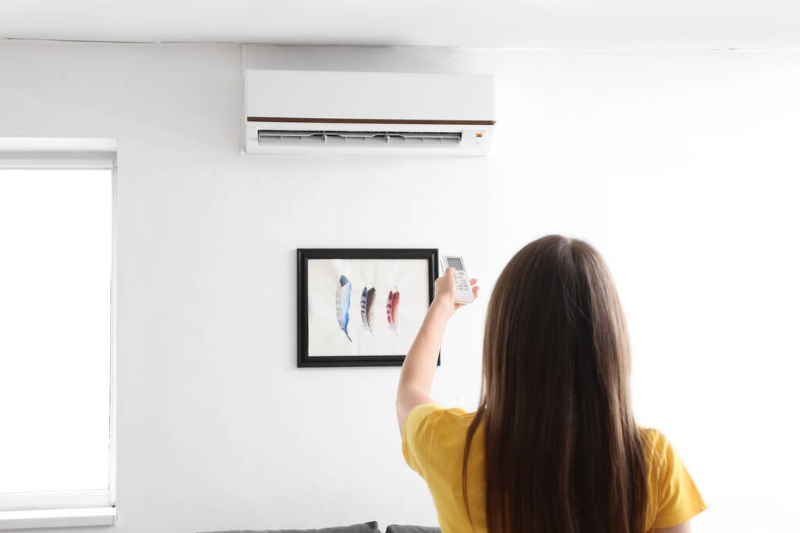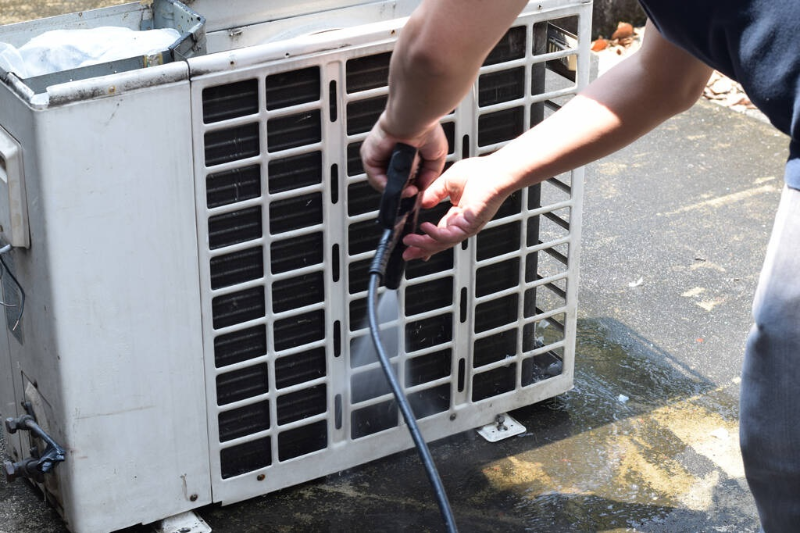Table Of Contents
In the scorching summer heat or the uncomfortable humidity of warmer climates, air conditioning emerges as a saviour, transforming our residential spaces into oases of comfort. However, the luxury of cool air comes at a cost, raising questions about the financial impact on our energy bills and the broader environmental implications. This guide gives you an insight into how much it costs to run an air conditioner. Let’s dive in!
Factors Influencing Air Conditioning Costs

Climate and geographic location
The geographical setting plays a vital role in determining the strain on your AC unit. Hotter climates demand more significant cooling efforts, leading to increased energy consumption. Regions with milder temperatures may experience lower operational costs.
Size and efficiency of the AC unit
The efficiency and size of your air conditioning unit are crucial factors. An oversized unit incurs unnecessary initial costs and operates inefficiently, escalating electricity bills. Choosing the right-sized, energy-efficient unit is essential for optimal performance.
Insulation and home design
The architectural nuances of your home contribute significantly to cooling costs. Well-insulated homes retain cool air more effectively, reducing the workload on your AC. Conversely, poorly insulated spaces leak cool air, demanding more energy to maintain comfortable temperatures.
Thermostat settings and usage patterns
Your habits and thermostat settings have a direct impact on your energy bills. Constantly adjusting the thermostat or setting it too low can spike consumption. Understanding and optimising your usage patterns can lead to substantial savings.
Energy efficiency ratings
Pay attention to the energy efficiency ratings of your air conditioning unit. The energy efficiency ratings provide valuable insights into how efficiently your system utilises energy. Upgrading to a higher-rated unit may yield long-term cost savings.
Calculating Electricity Costs

Understanding kilowatt-hour (kWh)
Before delving into costs, grasp the concept of a kilowatt-hour (kWh), the standard unit for measuring electricity consumption. It’s the key to deciphering your electricity bills and understanding the energy usage of your air con unit.
Determining AC unit’s power consumption
Consult your AC brand’s specifications to identify its power consumption in kilowatts. This information is crucial for accurate calculations. The power consumption, multiplied by the time the unit operates, gives you the kWh usage.
Estimating daily, monthly, and annual costs
Once armed with your kWh usage, estimating daily, monthly, and annual costs becomes a simple arithmetic exercise—factor in seasonal variations and fluctuations in usage patterns to get a comprehensive view of your anticipated expenses.
Considering time-of-use rates
Some regions have time-of-use electricity rates, where costs vary depending on the time of day. Tailoring your AC usage to off-peak hours can lead to substantial savings. Familiarise yourself with your local utility’s pricing structure to make informed decisions.
Seasonal variations in energy consumption
Recognise the seasonal ebb and flow of your cooling needs. Summers, naturally, demand more extensive use of your AC, while milder seasons allow for reduced usage. Being mindful of these patterns helps you budget effectively and implement cost-cutting strategies.
Tips for Energy-Efficient Cooling

Regular maintenance and cleaning
Routine maintenance, including cleaning or replacing filters, ensures your portable air conditioner operates efficiently. A well-maintained unit consumes less energy, translating to lower operational costs.
Upgrading to a high-efficiency AC unit
Consider investing in a high-efficiency AC unit. While the initial running cost may be higher, the long-term savings on energy bills often justify the investment.
Proper insulation and sealing
Addressing gaps and improving insulation in your home or commercial business prevents cool air from escaping, reducing the workload on your AC. Properly sealed windows and doors contribute significantly to maintaining a consistent and energy-efficient indoor temperature.
Smart thermostats and automation
Embrace technology to optimise your cooling strategy. Smart thermostats allow precise control, enabling you to program temperature settings based on your schedule. With automation, you will have your air conditioner running efficiently even when you’re away, maximising energy savings.
Strategic use of fans and ventilation
Augment your cooling efforts by strategically using fans and natural ventilation. Ceiling fans, for instance, distribute cool air more effectively, allowing you to set your thermostat higher without sacrificing comfort.
Cost-Saving Strategies

Exploring government rebates and incentives
Check for available government rebates and incentives for energy-efficient upgrades. Many regions provide financial incentives to encourage homeowners to adopt environmentally friendly and energy-saving technologies.
Investing in solar or renewable energy
Consider harnessing the power of solar or renewable energy to offset your AC’s electricity consumption. Installing solar panels or exploring other green energy sources aligns with sustainability goals while reducing long-term operational costs.
Implementing zone cooling systems
Zone cooling systems allow you to cool specific areas of your home, avoiding unnecessary cooling of unoccupied spaces. This targeted approach optimises energy use, resulting in cost savings over time.
Timing AC usage to off-peak hours
Capitalising on off-peak electricity rates is a simple yet effective strategy. Time your AC usage to align with periods when electricity costs are lower, easing the financial burden of cooling your home.
Enhancing Home Energy Efficiency Holistically
Addressing overall home energy efficiency contributes to lowering AC costs. From energy-efficient appliances to smart lighting, a holistic approach ensures that every aspect of your home operates efficiently, reducing the strain on your AC.
Comparative Analysis of Cooling Alternatives

Window AC units vs. central air conditioning
Compare the pros and cons of window AC units also known as box air conditioning versus central air conditioners. While window units may be more affordable upfront, central systems often prove more efficient and cost-effective in the long run.
Ductless mini-split systems
Explore the benefits of ductless split systems, which offer zoned cooling without any ductwork, as with ducted air conditioners. Their energy-efficient design and versatility make them a compelling option for specific home configurations.
Evaporative coolers and hybrid solutions
Consider alternative cooling solutions like evaporative coolers, which use water evaporation to cool the air. Hybrid systems that combine traditional AC with innovative technologies present intriguing options for efficiency and cost savings.
Assessing initial costs vs. long-term savings
Evaluate the upfront costs of different cooling alternatives against their long-term operational savings. While a particular system may have a higher initial investment, its energy efficiency may yield significant financial benefits over time.
Environmental impact considerations
Beyond costs, factor in the environmental impact of your cooling choices. Opting for eco-friendly refrigerants and sustainable technologies aligns with broader environmental goals, contributing to a more responsible home cooling approach.
Future Trends in Air Conditioning Technology

Advancements in energy-efficient HVAC systems
Stay abreast of the latest innovations in HVAC systems. Advancements in energy efficiency, smart technology integration, and sustainable practices shape the future landscape of air conditioning technology.
Integration of smart grid and AI
Explore how smart grids and artificial intelligence (AI) are revolutionising how we manage and optimise energy consumption. The advanced technology in air conditioning systems holds promise for increased efficiency and cost savings.
Sustainable refrigerants and eco-friendly practices
Witness the shift towards sustainable refrigerants and eco-friendly practices within the air conditioning industry. As environmental awareness grows, manufacturers are exploring greener alternatives that align with global sustainability goals.
Consumer awareness and demand for green solutions
As consumers become environmentally conscious, the demand for green cooling solutions rises. Increased awareness prompts manufacturers to prioritise energy efficiency, creating a market that supports sustainable practices.
Regulatory changes affecting AC technology
Keep an eye on regulatory changes shaping the air conditioning industry. Government initiatives and policies to lower carbon footprints may influence the development and adoption of more energy-efficient and eco-friendly technologies.
In the quest for comfort, don’t let your air conditioning bills spiral out of control. Armed with insights from this guide, you have the power to optimise your cooling strategy, trim expenses, and embrace eco-friendly solutions. Take charge of your home’s climate and energy efficiency—your wallet and the planet will thank you!
Embrace Cool Comfort, Conquer Costs
Ready to transform your home into an oasis of comfort without breaking the bank? Explore the tips, strategies, and cutting-edge technologies discussed in this guide to revolutionise your approach to air conditioning.
It’s time to chill smarter, save more, and contribute to a greener future. You can also contact an AC professional for targeted assistance and make every breath of cool air a victory for your comfort and wallet!



